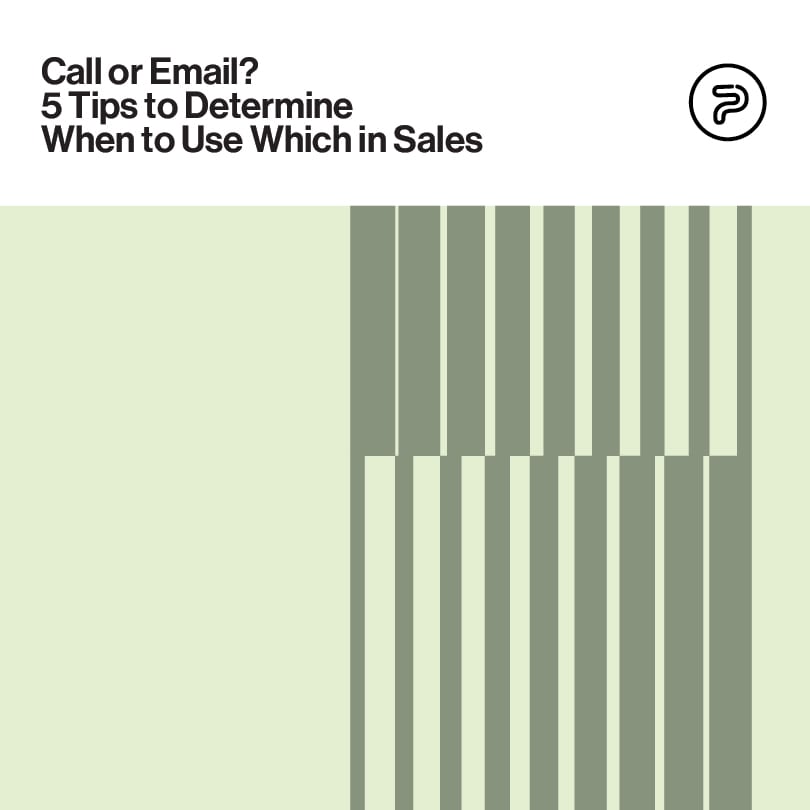When it comes to delicate art forms in marketing strategies, initiating a productive first contact with your prospects as a sales rep will probably be the first thing most experts will have in mind right off the bat.
Why?
Well, as the saying goes, there’s never a second chance to make a first impression and that first impression can very well make or break a call. And when sales are at stake, you want to do everything right to push to convo towards the ultimate goal: making a sale.
That being said, every metric and every method counts when it comes to outreach. How to initiate contact? Send an email or simply just call them? Don’t rely on your personal preference, but try to see the telltale signs and use the method your prospects will be more responsive to.
How?
Read on to find out.
Cold Calls vs. Cold Emails
Undoubtedly, both of these methods are effective in their own right. The most significant difference between the two methods is a matter of convenience versus directness and a matter of volume.
For starters, it’s easier and faster to send an email but calls can prove better at gathering direct responses and valuable info.
To make the differences even more obvious, here’s a little breakdown:
Calls
- More personal: A cold call can be more personal than just sending out an email. By default, it has a better chance of garnering an immediate response and enables your prospects to say “yes” or “no” right away. Simply put, calls are more dynamic and allow you to adjust your strategy on the fly as the convo progresses.
- Can also be more invasive: At the same time, cold calls may also go downhill. By nature, these calls are pretty invasive, and often, people simply don’t feel like constantly answering them, and many of them even get frustrated when you call them. Apart from that, you, yourself might also get impatient and nervous if your calls aren’t smooth sailing. On the financial side, calls are also more expensive than emails and more time-consuming, On top of that, if you are constantly calling prospects at the wrong time, the reputation of your company can suffer.
Emails
- Easier to scale: These are cheaper and more efficient outreach methods and as such, are also more scalable. While you make a single phone call, you could send out at least ten cold emails. Furthermore, you also have the chance to add more content to the email. Charts, visuals, digital leaflets—enabling you to be more informative and more appealing.
- Easier distribution and tracking: Cold emails also tend to be less intrusive than cold calls, which means that there’s a better chance of your prospects being more polite when they respond, even if the answer will still be “no”. Apart from that, you can also automate, track and forward emails, which makes them a lot easier to distribute and follow.
- Your prospects can ignore them easier: One huge downside of cold emails is the fact that your prospects can easily ignore them. As a matter of fact, your prospects might get dozens of emails like yours every day. There’s a huge chance that your emails will be left unopened, get blocked, or even deleted without ever being read. So, no matter how compelling your emails are, you might never get a response to them.

Phone Or Email?
Deciding whether to call or email your prospect should be one of the cornerstones of your outreach strategy.
And to decide faster, the following factors might be able to help you out.
Consider the Time and Day of the Week
Call
Before you reach out, always take a look at the clock and the calendar. Statistics show that phone connect rates rise with the progression of the day and the week. In other words, you have a better chance of contacting someone via phone later during a workday and a workweek.
As such, some experts recommend considering establishing 3 PM and later as prime calling hours. Also, Thursday and Friday should also be considered prime days.
What if you still can’t get a hold of your prospect after 3 PM on a Thursday? Your best bet would be leaving a voicemail. Stats show that voicemail responses also tend to rise in these timeframes. That being said, calling later is a win-win strategy.
Conversely, the best time span for sending out emails is a bit shorter but a lot more frequent. Experts recommend sending mails either 10 minutes before a full hour or 10 minutes after.
Why? They argue that these brief windows generally will correspond with the time people usually go or leave meetings. And in those few minutes, they have to kill, they are most likely to scroll through their smartphones, check their mail.
What are You going to ask?
Before you reach out, you must first determine the objective of the outreach. Would you like to set up something? Get more info? Get a referral? Categorizing your “ask” as either “strong” or “weak” can help you determine whether you should send an email or take the more personal route.
Call
“Strong asks” will require more immediate responses and most likely, commitment from the prospect to act. Conference calls, product trials, and meetings should all be “strong asks” because they will need prompt feedback.
These situations require more from both the prospect and from the salespeople (because they will want to secure a “yes” as a response) and let’s be honest, it’s a lot easier to do all this via phone. Real-time, no delays,
However, when you have a “weak ask” it’s better to draft an email. If it’s not that important, try not to take up your prospects’ time on the phone, especially if a few short lines via email would suffice both from you and them.
Interestingly, you will often see that most salespeople will have a contradictory approach. They will ask prospects for meetings via email and will ask simple questions via the phone. Why? In most cases, they are afraid of rejection when it comes to strong asks on a call.
Consider “Prospect Level”
Most likely, individual contributors will have no assistants, while most C-level executives will.
Call
With all that being said, the higher your prospect is within an organization, the more likely you are to reach somebody when you call. Chances are, they won’t be the executive whom you were trying to reach, but their assistant, so the message will get through. Also, higher-level prospects will generally be a lot more comfortable on the phone, as they aren’t intimidated by sales calls that much.
On the other hand, if you’re dealing with an individual contributor, chances are, they won’t always be able to answer the phone, and when they don’t answer, nobody else will answer it for them. Also, they will be less likely to return a call if your number is unknown to them. Additionally, lower-level professionals will be more likely to participate in meetings, work in groups or be on the road. All that being said, sending an email would be a better way of securing an answer.
Assess Buyer Persona
You probably know that different buyer personas will prefer different communication styles. Knowing which one to use will depend on several factors such as profession, age, the industry they’re working in, and so on.
Calls
It can be a bit more difficult to generalize here, but people in traditional industries are more accustomed to receiving phone calls, and people who work in customer-facing roles also feel more convenient when it comes to the phone.
On the opposite end, people who work in internal jobs might be more comfortable answering emails. Also, millennials, in general, are more inclined to communicate via email than over the phone. If you have to reach out to younger buyers, keep this in mind.
Considering the Deal Momentum
Call
If you’re dealing with a rather unresponsive prospect who’s at the fence about what you’re selling, it might be best to get a bit assertive and pick up the phone. This way, you can immediately ask and get a faster answer.
If everything’s going smoothly and your prospect is responsive and seems willing to get the deal closed, sending an email to hammer out the finishing touches shouldn’t stall the process.
What do the Stats say?
Now that you know how to approach your prospects, let’s take a look at what the numbers have to say about the subject.
- Around 31% of sales reps say that sending out personalized emails to their prospects is better than automated emails.
- Generally, when you make a cold call, you will have around five to 10 minutes to make a good impression.
- Wednesday and Thursday are the best days for conducting calls either between 11 AM and noon or between 4 and 5 PM.
- Late-morning and late-afternoon personalized emails have better open and click-through rates.
- On average, an average sales rep will have to perform eight outreach attempts to initiate a meeting while a top-performing rep will perform five.
- Around 48% of reps don’t follow up after a cold call.
- Generally, cold email response rate is only 1% and only 24% of cold email pitches get opened.
- It will generally take around six call attempts to convert a customer.
Following Up
Now you know what are the best ways to initiate contact. However, what to do after the first attempt?
Generally, experts will recommend that the beginning and the end of sales engagements should be more phone-heavy because all the strongest asks are here. Basically, you start a relationship and close a deal at these touchpoints. In between, emails can do the trick.
Putting It Together
Mastering the subtle art of successful outreach undoubtedly takes time and effort. Honestly, getting good at reaching out to prospects and managing to close a deal with them is all about practice and knowing how to improvise and react to certain situations on the fly (especially on the phone).
As such, these tips should help you get going, and might even give you an edge when communicating to your prospects, leading them ever closer to the ultimate goal—sealing the deal.





